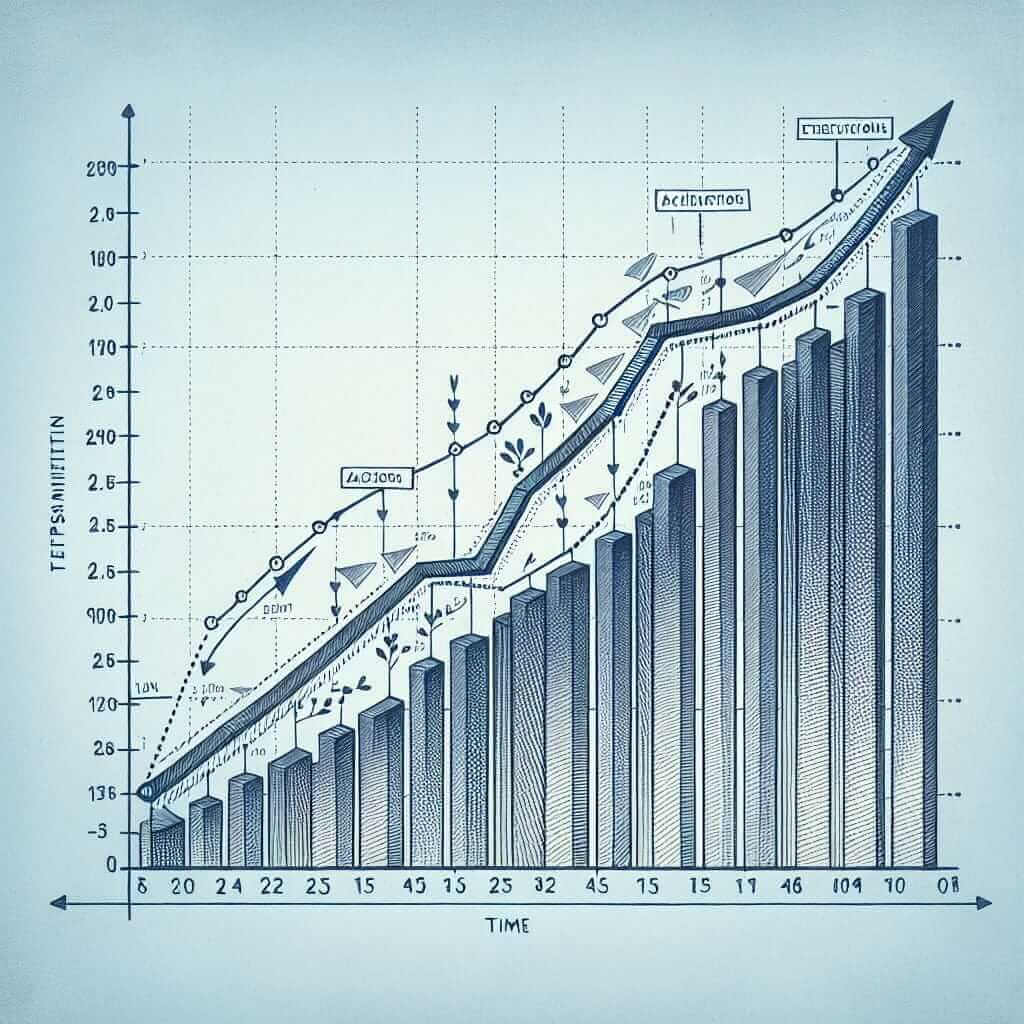When striving for a Band 7 or higher in the IELTS writing and speaking exams, demonstrating command of complex grammatical structures is essential. One such structure that often causes confusion, yet holds the key to achieving a higher lexical resource score, is the use of “it reports that” and its variations. While seemingly simple, this structure has nuances that, when understood correctly, can significantly elevate your language proficiency in the eyes of the examiner.
Let’s consider a few examples of how this structure might appear in different sections of the IELTS exam:
Speaking (Part 3): “Recent studies suggest that climate change is accelerating. It’s also been reported that extreme weather events are becoming more frequent.”
Writing Task 1 (Describing a graph): “The chart clearly illustrates that online sales have increased dramatically. It is further reported that this trend is expected to continue.”
Writing Task 2 (Opinion Essay): “Some argue that social media has a negative impact on young people. However, research indicates that it can also be a valuable tool for education and social connection.”
In each of these examples, the use of “it reports that” or a similar structure allows us to present information in an objective and impersonal manner, which is a hallmark of academic and formal writing.
Understanding “It Reports That” and its LSI Keywords
The phrase “it reports that” functions as a reporting verb structure. It’s used to introduce information from a source without directly stating the source’s identity. This technique is common in academic writing and news reporting where the focus is on the information itself, rather than the source.
LSI Keywords:
Here are some key terms and phrases related to “it reports that” that will help you grasp the concept and use it effectively:
- Impersonal reporting: Presenting information without referring to a specific person or group as the source.
- Empty subject “it”: Using “it” as the subject of the sentence when the actual subject is a clause later in the sentence (e.g., “It is believed that…”).
- Reporting verbs: Verbs like “suggest,” “indicate,” “show,” “reveal,” etc., used to introduce findings, data, or opinions.
- Passive voice: Often used with impersonal reporting structures to further emphasize the action or information rather than the actor (e.g., “It has been observed that…”).
Mastering the Structure
Let’s break down the formula for using this structure effectively:
[It + Passive Reporting Verb + that clause]
- It: The empty subject, referring to the information being reported.
- Passive Reporting Verb: Verbs like: is reported, is suggested, is indicated, is claimed, is found, has been observed, has been noted, etc.
- That clause: Contains the information being reported.

Application in IELTS
Writing Task 1:
Example: “It is evident from the graph that there has been a sharp decline in newspaper readership over the past decade.”
Analysis: Here, “it is evident” is a more sophisticated alternative to simply stating “The graph shows…”. It adds a layer of formality and objectivity to your writing.
Writing Task 2:
Example: “Opponents of this view contend that such measures would be ineffective in curbing crime rates.”
Analysis: By using “opponents of this view contend,” you present opposing arguments in a neutral and academic way, enhancing the clarity and credibility of your essay.
Speaking Part 3:
Example: “Well, it’s generally accepted that social media can be addictive, but it’s also been shown to have benefits in terms of connecting people.”
Analysis: Using these structures allows you to present both sides of an argument in a balanced and articulate manner, showcasing your ability to use complex language effectively.
Elevating Your Score: Tips and Tricks
- Vary Your Reporting Verbs: Don’t overuse “it is reported that.” Experiment with synonyms like “it is suggested,” “it has been observed,” “studies indicate,” etc.
- Combine with Passive Voice: For a more formal tone, combine the structure with passive voice: “It has been widely reported that…”
- Context is Key: Use this structure when reporting information, findings, research, or opinions from external sources.
Common Pitfalls to Avoid
- Overuse: Using this structure too frequently can make your writing sound repetitive.
- Informal Context: Avoid this structure in informal writing or speaking, as it can sound overly formal.
- Incorrect Verb Tense: Ensure the verb tense in the “that clause” aligns with the context and time frame you are referring to.
Conclusion
Mastering the use of “it reports that” and its variations is a valuable tool for any IELTS candidate aiming for a higher band score. By understanding its structure, exploring its synonyms, and practicing its application in various contexts, you’ll be well-equipped to impress the examiner with your grammatical range and lexical resource. Remember, consistent practice and focused effort are key to unlocking your full potential in the IELTS exam.